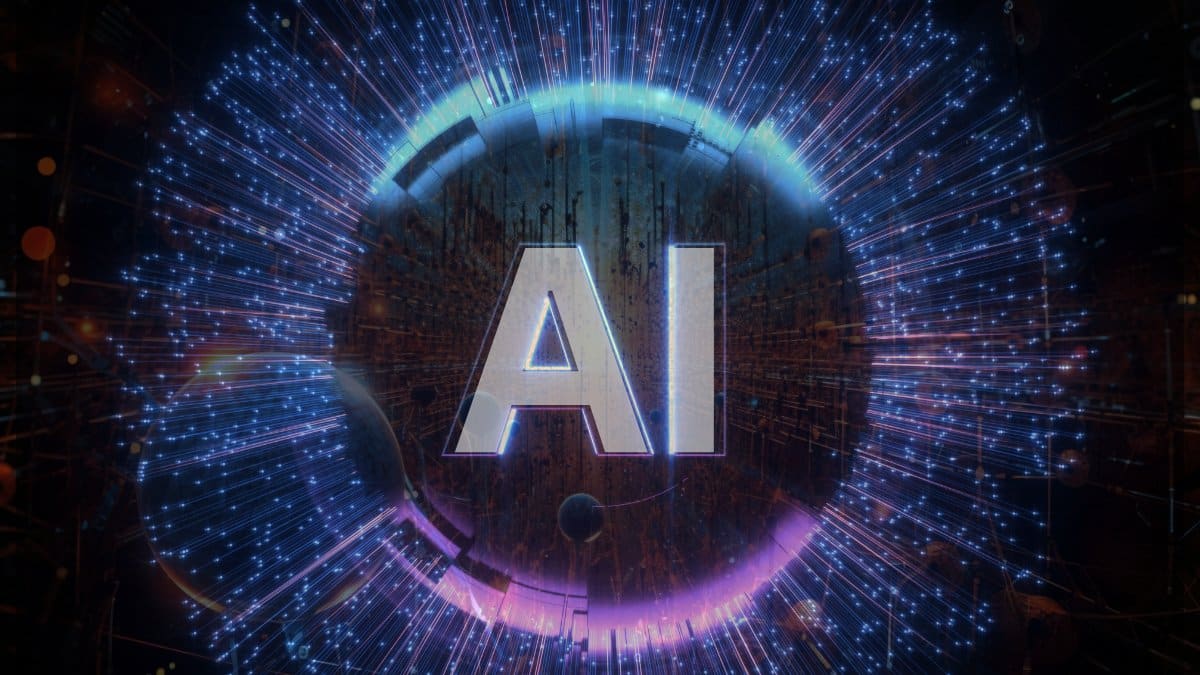
May 30, 2023
what is artificial intelligence (ai) and how does it work?
Artificial intelligence (AI) has come a long way since the days of science fiction stories, capturing the imagination of people around the world. Today, AI is transforming not only how we live, work, and play, but also the way businesses operate and innovate. As we continue to explore the possibilities of AI, understanding its history, components, development, and ethical concerns becomes essential. In this blog post, we will delve into the fascinating world of AI and examine its significance, types, real-world applications, and the challenges it presents.,From expert systems computer vision and natural language processing to autonomous vehicles and sentient systems, AI has now become an integral part of our daily lives. So, let us embark on a journey to uncover the intricacies of AI and its astounding potential to revolutionize the way we perceive and interact with the world around us.,- AI is composed of components such as expert systems, natural language processing and speech recognition.,- AI development requires specialized hardware, software and programming languages in order to enable machines to execute tasks that usually require human intelligence.,- AI has the potential to revolutionize our lives by changing how we live, business processes and offering advantages with certain drawbacks which should be considered before implementation., ,,Artificial intelligence (AI) can be defined as the capability of a machine to perform a task that would have traditionally necessitated human intelligence. AI research aims to develop systems that can reason, learn, plan, and perceive, among other objectives. The term "artificial intelligence" encompasses various components of computer science, such as expert systems, natural language processing, and speech and image recognition.,Understanding the different components of AI is crucial to grasping its full potential. Expert systems mimic the decision-making of human specialists, natural language processing enables computers to understand and interpret human language, and speech recognition empowers machines to convert spoken words into text.,Let's delve deeper into these crucial components that form the foundation of AI.,Expert systems are computer programs that employ artificial intelligence technologies to imitate the decision-making and behavior of a human specialist in a particular field. These systems consist of two subsystems: the inference engine and the knowledge base, which serve to draw conclusions and store facts and rules, respectively. The first Expert System was developed in 1965 by Edward Feigenbaum and Joshua Lederberg of Stanford University in California, U.S.,Expert systems offer several benefits, such as delivering accurate and consistent advice, providing advice in a timely manner, and delivering advice economically. However, they also have drawbacks, including their dependence on human experts to supply the knowledge base, their limited ability to adapt to changing conditions, and their potential for bias.,Despite these limitations, expert systems remain a crucial component of AI and have a wide range of applications.,Natural language processing (NLP) is a subfield of Artificial Intelligence that utilizes machine learning technology to enable computers to comprehend, interpret, and manipulate human language. NLP employs machine learning algorithms to make sense of and interpret natural language, human speech, and can be utilized to detect patterns in text, extract meaning from text, and generate natural language responses.,NLP has a variety of applications, such as personal assistants like Siri, Alexa, and Cortana, automated customer service, text analysis, and natural language generation. As AI continues to evolve, NLP plays a significant role in bridging the gap between machines and human language, enabling more natural interactions and greater understanding.,Speech recognition is the capability of a a computer program to recognize and convert spoken words into text using Artificial Intelligence and Machine Learning technology. It functions by utilizing algorithms to translate spoken words into text, applying machine learning to identify patterns in the audio data and then convert it into text.,Speech recognition offers increased accuracy, faster processing times, and an enhanced user experience. However, it also has drawbacks, such as the possibility of errors caused by ambient noise, difficulty understanding different accents, and the requirement of specialized hardware.,Examples of speech recognition include voice-activated virtual assistants like Siri and Alexa, as well as automated customer service systems.,,AI development involves utilizing programming languages such as Python, Lisp, Java, C++, and R to develop hardware and software that enable machines to execute tasks that usually require human intelligence. Specialized hardware and software are indispensable elements of AI development, as they enable machines to execute operations that usually necessitate human intelligence.,Popular programming languages employed in AI development include Python, R, Java, C++, and Julia. Let's explore the roles of specialized hardware, AI software, and popular programming languages in AI development, and how they contribute to the creation and implementation of AI systems.,Specialized hardware refers to hardware that has been developed or designed for a specific activity or function, such as optimization for machine learning or other AI-related tasks. Utilizing specialized hardware can offer higher speed and more effective processing of AI tasks, as well as improved accuracy and dependability. Additionally, it can decrease the cost of AI development, as specialized hardware is often more cost-effective than general-purpose hardware.,However, specialized hardware has its disadvantages, such as being difficult to upgrade or replace due to its specific purpose, and potentially incurring higher costs for development and maintenance. Despite these drawbacks, specialized hardware plays a crucial role in the development and implementation of AI systems, enabling them to perform tasks with greater efficiency and precision.,AI software is a type of computer software that utilizes artificial intelligence techniques to complete tasks. Examples of AI software include Google Cloud Machine Learning Engine, Azure Machine Learning, and IBM Watson Studio. Microsoft, for instance, offers a range of AI tools for developers on Azure, including platforms for machine learning, data analytics, and conversational AI, as well as APIs that reach human parity in computer vision, speech, and language.,AI software is essential for the development and implementation of AI systems, as it enables them to perform tasks that would otherwise require human intelligence. As AI technology continues to evolve, the role of AI software in the creation of intelligent systems becomes increasingly significant.,Programming languages such as Java, Python, C++, JavaScript, and Ruby are among the most commonly utilized languages in the field of AI development. Java, for example, is a general-purpose, object-oriented programming language developed by Sun Microsystems in 1995, widely used for developing web, mobile, and desktop applications.,Python, another popular language, is a high-level, interpreted, general-purpose programming language created by Guido van Rossum in 1991, employed for the development of web, mobile, and desktop applications.,C++, JavaScript, and Ruby are also important programming languages in the realm of AI development. These languages play a crucial role in the creation of AI systems, allowing developers to build and implement artificially intelligent systems and solutions that can perform tasks that typically necessitate human intelligence.,,AI has the potential to revolutionize the way we live, work, and play, and has presented new business prospects for major organizations. AI technology has been used in various applications, such as healthcare, business, and education. Alphabet, the parent company of Google, has a presence in multiple AI systems through its subsidiaries, such as DeepMind, Waymo, and Google, and the advancements made by Alphabet in both deep learning techniques and AI could have a significant impact on the future of humanity.,As AI continues to transform our lives, it is essential to understand its significance and the opportunities it presents. In the following sections, we will explore how AI is changing everyday life, the way we live and revolutionizing businesses.,AI has been proven to have a positive effect on society, as it increases productivity, enhances healthcare and education, and makes daily life more manageable and convenient. Additionally, AI can be used to tackle complex issues and decrease the possibility of human errors. AI technologies, such as those used to anticipate, combat, and comprehend pandemics, demonstrate the potential of AI to improve our lives.,AI applications like IBM Watson, a healthcare technology capable of understanding natural language and providing answers to questions, are revolutionizing the way we live. By automating tedious tasks, providing tailored recommendations, and aiding us in making informed decisions, AI can facilitate our daily lives in ways we could only imagine a few years ago.,AI is revolutionizing business by optimizing customer experience, automating repetitive tasks, and increasing operational efficiency. Businesses are leveraging machine learning algorithms to optimize analytics and CRM platforms, thereby optimizing customer service. Additionally, chatbots have been integrated into websites to provide fast and efficient customer service. AI is employed in a range of applications, including chatbots, virtual assistants, process automation, and sales forecasting.,Companies like Alphabet Inc. are at the forefront of the AI revolution, driving advancements in AI technology that are transforming the business landscape. As AI continues to make its mark on businesses across various industries, it is essential for organizations to understand and leverage the potential of AI to stay competitive in the rapidly evolving market.,,AI can offer a variety of advantages, such as reducing the potential for human error, automating mundane tasks, providing impartial decisions labeled training data, and optimizing efficiency and workflows. Additionally, AI can operate without interruption and may result in cost savings.,However, AI can also be costly and may lead to the development of systems with inherent biases. To fully appreciate the potential of AI, it is important to weigh both its advantages and drawbacks. In the following sections, we will explore the benefits and challenges of AI in more detail, focusing on processing power and speed, as well as cost and bias concerns.,AI is enhancing processing power and speed by automating certain tasks, optimizing algorithms, utilizing parallel processing, and utilizing complex algorithms to automate decision-making. Parallel processing, a computing technique that enables multiple tasks to be executed concurrently, is utilized to expedite the processing of considerable amounts of input data, by dividing it into smaller segments and executing them in parallel.,Complex algorithms used to automate decision-making include machine learning algorithms, deep learning algorithms deep neural networks, and reinforcement learning algorithms. The benefits of leveraging AI in enhancing processing power and speed include increased efficiency, enhanced accuracy, and expedited decision-making.,Cost and bias considerations refer to the potential for AI systems to introduce new costs and biases, and replicate or exacerbate existing biases. To address these concerns, AI can enable cost savings by automating labor-intensive tasks and facilitate the identification and reduction of human biases. However, AI can also introduce additional costs and biases, as well as replicate or worsen existing biases.,To mitigate bias in AI systems, implementing open-source practices, fostering collaboration, and making decisions based on data can help reduce bias in AI systems. By considering the potential costs and biases associated with AI, we can better understand its implications and develop more equitable and effective AI systems.,,AI can be categorized as weak or strong, depending on its purpose and capabilities. Weak AI is designed to perform a specific task and is limited to following human commands, while strong AI is designed to think and act like a full human being. The distinction between weak and strong AI is also reflected in the difference between the term artificial intelligence, artificial general intelligence and artificial narrow intelligence, where the former refers to a machine's capacity to comprehend and execute vastly different tasks based on its accumulated experience, while the latter is engineered to carry out a specific task.,Understanding the distinction between weak and strong AI is crucial to appreciating the full potential of AI and its various applications. In the following sections, we will explore the different types of AI and their progression, from task-specific intelligent systems to sentient systems.,Exploring AI Types and Progression,----------------------------------,Four types of AI have been identified, including task-specific intelligent systems, generalized systems, limited memory, and self-aware AI (sentient systems). Each type of AI serves a unique purpose and has its own set of capabilities, which contribute to the development and implementation of AI systems.,As we explore the various types of AI, it is important to understand their differences and the roles they play in the evolution and progression of AI. In the following sections, we will delve deeper into each type of AI, examining their characteristics, benefits, and challenges.,,Task-specific intelligent systems are computer systems designed to execute tasks that typically require human Insight, such as visual perception, speech recognition, decision-making, and others. These computer systems often offer the advantage of increased speed and accuracy compared to human performance, and can be employed to automate labor-intensive processes, as well as analyze large data sets and make decisions accordingly.,However, task-specific intelligent systems can be costly to develop and sustain, and they may be prone to mistakes if not suitably programmed. They can also be subject to bias if the data employed to train them is not reflective of the population. Despite these limitations, task-specific intelligent systems remain a crucial component of AI, with examples including facial recognition systems, autonomous vehicles, and natural language processing systems.,A generalized system is an AI system that has been developed to possess the capability to adapt to and learn from new tasks. Supervised learning, a technique for training AI systems utilizing labeled examples that have been classified by humans, plays a significant role in the development of generalized AI systems. DeepMind, a subsidiary of Alphabet, focuses primarily on the development of artificial general intelligence.,Generative AI technology, such as ChatGPT and Dall-E 2, are examples of generalized AI systems that have been developed by companies like OpenAI. As AI technology continues to advance, the development and implementation of generalized systems will play an increasingly important role in the future of AI.,Limited memory AI is designed to store past experiences and utilize them to inform decisions in the current context. This type of AI is created through the continuous training of a model in order to analyze and utilize new training data, or by constructing an AI environment for the automatic training and renewal of models.,By retaining previous data and predictions, limited memory AI can enhance the decision-making process, allowing AI systems to make informed decisions based on past experiences. This type of AI is particularly useful in applications that require the analysis of large data sets and the ability to adapt to changing conditions.,Self-aware AI, also referred to as sentient systems, or ai program denotes ai system or artificial intelligence with human-level consciousness and an understanding of its own existence and capabilities. This is the most advanced type of artificial intelligence, however, it is not yet in existence. Self-aware AI is characterized by machine intelligence possessing human-level consciousness and being able to understand its own existence in the world, as well as the presence and emotional state of others.,Although self-aware AI is not currently available, its development remains a long-term goal for many AI researchers. The potential of self-aware AI to revolutionize the way we interact with machines and the world around us is a fascinating concept that continues to inspire the development of new AI technologies.,,Examples of AI technology in use today include automation, machine learning, robotics, and autonomous vehicles. These applications demonstrate the versatility of AI and its potential to transform various industries and aspects of our daily lives.,In this section, we will explore some of the real-world applications and examples of AI, showcasing the diverse range of tasks that AI can perform and the impact it is having on our lives and businesses.,Automation is the utilization of technology to execute tasks with decreased or human intervention or involvement, encompassing the development and application of technologies to generate and perform tasks commonly deliver goods and services with minimal or human intervention or involvement. Automation can be classified into three types: business process automation, IT automation, and personal automation.,The benefits of automation include increased efficiency, improved accuracy, and cost savings. However, automation also has drawbacks, such as the potential for job losses, heightened risk of mistakes, and limited flexibility. Examples of automation in AI include robotic process automation, and machine learning systems, and autonomous vehicles.,Machine and deep learning is a branch of artificial intelligence that focuses on the utilization of data and algorithms to replicate the way humans learn, incrementally increasing its accuracy. It allows systems to learn and enhance from experience without requiring explicit programming. Deep learning, a subset of machine and deep learning itself, can be conceptualized as the automation of predictive analytics.,Examples of machine learning in AI applications include Google Maps, which leverages location data from smartphones and user-reported data regarding construction and car accidents to monitor traffic patterns and determine the optimal route. Machine learning is also utilized in AI tools like ChatGPT, an AI chatbot developed by OpenAI that facilitates natural conversations.,Robotics is the engineering discipline that concentrates on the design and production of robots. Robots are regularly utilized to execute tasks that are challenging for humans to execute or execute consistently. Robotics is a field that is closely related to AI, as many robots are designed to perform tasks using AI technologies.,Examples of robotics in AI applications include Boston Dynamics' robots, which are remarkable for their use of AI to traverse and react to different environments. As AI technology continues to advance, the role of robotics in the development and implementation of intelligent systems will become increasingly significant.,,Autonomous vehicles are vehicles that are equipped with the capability to sense their environment and operate without human input. They function by relying on sensors and software to interpret information and make decisions accordingly.,Examples of autonomous vehicles include: self driving cars own-driving cars, which are being developed and tested by various companies around the world. As AI technology continues to evolve and improve for self driving cars, the development and implementation of autonomous vehicles have the potential to revolutionize transportation and change the way we travel.,Ethical considerations in AI include privacy, bias, transparency, accountability, social benefit, and the impact on society. As AI technology continues to advance, it is essential to address these ethical concerns to ensure the responsible development and application of AI systems.,In the following sections, we will delve deeper into ethical considerations and governance in AI, focusing on bias and fairness, privacy and security, and AI regulations.,AI can introduce bias if the data used to train it is biased, or if the algorithms utilized to make decisions are biased. To address these concerns, AI can be employed to reduce bias and foster fairness by eliminating human subjectivity from decision-making processes. A promising approach is "counterfactual fairness," which guarantees that a model's decisions remain consistent in a counterfactual world where certain variables are altered.,To mitigate bias in AI systems, implementing open-source practices, fostering collaboration, and making decisions based on data can help reduce bias in AI systems. By considering the potential biases associated with AI, we can better understand its implications for human beings and develop more equitable and effective AI systems.,AI poses a risk to privacy and security due to the potential for data breaches and unauthorized access to personal information. To address these concerns, AI can be leveraged to protect privacy by encrypting personal data and detecting potential cybersecurity incidents.,By considering the potential privacy and security risks associated with AI, we can better understand its implications and develop more secure and privacy-preserving AI systems.,Given the rapid advancement of AI technologies and their lack of transparency, it is difficult to construct effective regulations for AI. Consequently, companies require guidance in implementing ethical AI systems. The current regulations pertaining to the use of AI tools are few, and where laws do exist, they generally relate to AI indirectly.,Organizations such as the U.S. The Chamber of Commerce is advocating for regulations concerning AI. Additionally, the European Union's General Data Protection Regulation (GDPR) is also on board with promoting such regulations. By developing AI regulations, we can ensure fairness, equity, and the prevention of any unethical use of AI systems.,Augmented intelligence pertains to AI tools that assist humans, while artificial intelligence denotes systems that act independently. This distinction is important to differentiate between autonomous AI and AI tools that support humans in various tasks and applications. Examples of AI tools that support humans include generative AI tools, such as ChatGPT and Dall-E 2, developed by companies like OpenAI.,As AI technology continues to evolve, the development of augmented intelligence tools that support humans will play an increasingly important role in the future of AI and its applications.,The history of AI encompasses ancient myths, logic, stored-program computers, and the Turing test. The development of electronic computers began in the 1940s, with AI experiencing significant growth between 1957 and 1974 as computers became faster, more affordable, and had greater storage capacity. Artificial Intelligence was established as an academic discipline in 1956, and extensive research on artificial neural networks also took place from the 1950s to the 1970s.,By understanding the history of AI and its evolution over ai research and time, we can appreciate the progress that has been made and the potential for future advancements in this fascinating field.,In this blog post, we have explored the world of artificial intelligence, delving into its history, components, types, real-world applications, and ethical considerations. We have examined the various components of AI, such as expert systems, natural language processing, and speech and image recognition, as well as the development of AI through specialized hardware, software, and programming languages. Furthermore, we have discussed the significance of AI in transforming our lives and revolutionizing business, the advantages and drawbacks of AI, and the ethical considerations and governance in AI.,As we continue to advance in the field of AI, it is essential to understand the potential of this technology and the challenges it presents. By appreciating the intricacies of AI, we can harness its power to revolutionize the way we perceive and interact with the world around us, ultimately shaping a brighter future for humanity.,Frequently Asked Questions,--------------------------,Artificial Intelligence (AI) is the ability of machines and systems to think and learn. Examples of AI include virtual assistants that can understand and execute tasks through voice or text commands, facial recognition technology, automated vehicles and self-navigating robots.,Artificial intelligence (AI) is the simulation of the human mind and intelligence processes by machines, such as computers, through the use of algorithms and computing power. AI enables machines to think, learn, and problem-solve in a manner that is comparable to the human brain.,AI stands for "Artificial Intelligence," which is a new feature on Snapchat. It is a chatbot that users can have conversations with in the app, which has raised some safety concerns for younger users and their parents. As such, it's important to understand its implications before deciding to use it.,May 5, 2023 marks the official launch of AI on Snapchat. It is important to be aware of the potential risks associated with this new feature, and to take the necessary steps to ensure the safety of the new feature.,Artificial intelligence (AI) works by utilizing large datasets to create intelligent algorithms that analyze and learn from patterns in the data. These algorithms are then applied to various tasks and can solve problems themselves, allowing AI to make decisions based on the data it has analyzed.,AI is constantly learning and evolving as it gains more information. This allows it to become increasingly accurate and effective in its processes.,In simple terms, artificial intelligence is a type of technology that allows computers and machines to simulate human understanding, by performing tasks such as recognizing patterns, problem solving, making decisions, and judging like humans do.,AI can process large amounts of structured data more quickly and efficiently, leading to improved accuracy and productivity.



